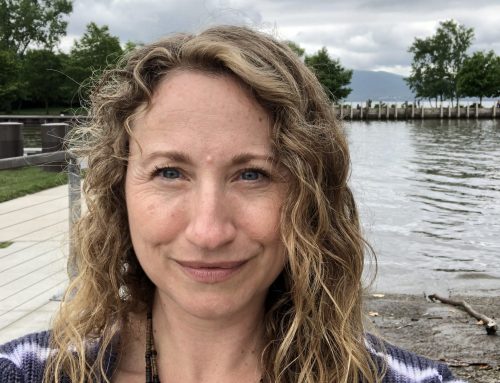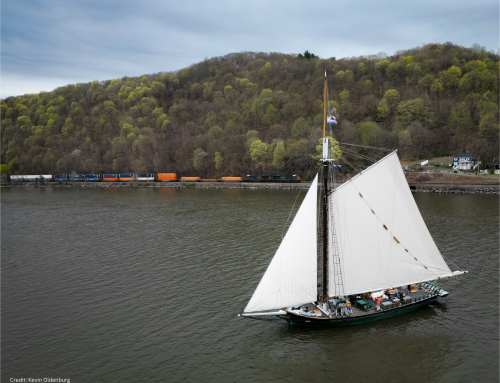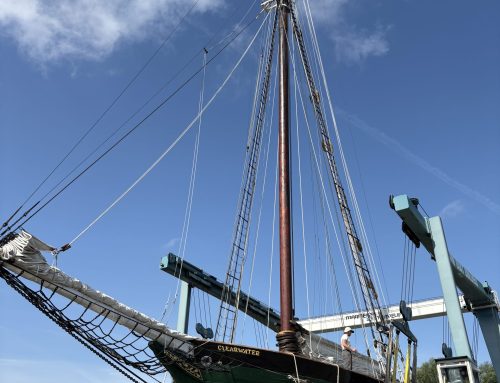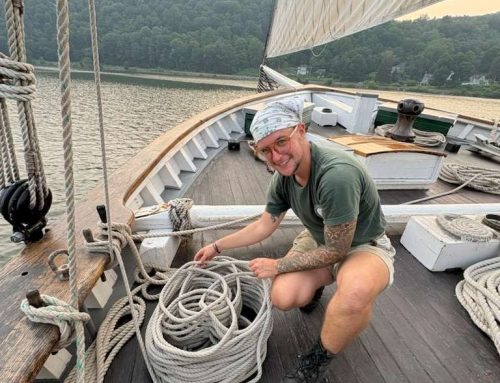Five-Year Review has potential to ensure the most effective cleanup
The U.S. Environmental Protection Agency announced today that, while the Hudson River cleanup continues this year, the agency will simultaneously perform a necessary evaluation to determine just how close General Electric will be to achieving the cleanup’s environmental goals when the project is complete. According to leading environmental groups closely monitoring the progress of the cleanup, this review will evaluate whether the current plans will remove enough toxic PCBs from the river bottom to achieve the health and restoration targets EPA established a decade ago or whether the project design needs adjustments to ensure a healthy, economically vibrant river is finally restored to waterfront communities and citizens of New York State.
The review comes after the first year of cleanup work under technical standards EPA established in 2010.
A joint statement follows from the groups—Hudson River Sloop Clearwater, Natural Resources Defense Council, Riverkeeper and Scenic Hudson:
“Results from last year’s cleanup efforts show that dredging works. It cleans up the river by permanently removing toxic PCBs from the environment, without spreading around the contamination as GE had predicted. In fact, monitoring results from flood events last spring provided a vivid illustration of how much GE’s pollution will continue to be churned up by natural causes if it is not removed once and for all.
“Scientists at other federal agencies have raised serious questions about whether the area targeted for dredging in the remainder of the cleanup is broad enough to capture all of the PCB ‘hotspots’ on the river bottom. They have warned that if these hotspots are left behind, it may be impossible to restore the river fully to health.
“EPA must use this ‘five-year review’ to thoroughly evaluate the evidence and adjust cleanup boundaries as needed to protect the environmental and public health. And GE should step up and do all of the work necessary to complete a thorough cleanup and restoration of the Hudson River. GE showed it is capable of living up to its motto of ‘solving the world’s toughest environmental challenges’ in the areas where it focused its dredging efforts last year. The rest of the Hudson River and the millions of people who live along this iconic waterway deserve nothing less.
“This five-year review process is an important statutory requirement to ensure that the PCB cleanup is being managed with public input and in response to changing conditions. Yet, allowing only one month to conduct what should be a thorough and precise analysis is insufficient given the complexity of the cleanup and the many challenges to date.”
Additional individual statements by the groups: “This marks another milestone in the long saga of cleaning up the Hudson River,” said Larry Levine, senior attorney for Natural Resources Defense Council. “It took the unwavering determination of citizens who stood up to GE for decades to get the company to clean up the mess it made in our backyard. This review must be rigorous to make sure GE conducts the world-class cleanup that this world-class river deserves. The higher-than-expected levels of contamination found during the project reinforce the need to make sure the job is done right. No one is better equipped to rectify the mistakes of their past than GE.”
Enviro Groups Welcome EPA Checkup on PCB Cleanup
Scenic Hudson President Ned Sullivan said, “The proven and accepted science shows that the health of the river and the lands and communities along its shores depend upon getting the mass of these toxic PCBs out of the cleanup area. This five-year evaluation must consider whether a judicious expansion of dredging to capture additional spots of high PCB concentrations is warranted. With all the effort and investment put into this project, and EPA’s and GE’s commitment to a successful result, we need to ensure that these health-threatening chemicals are adequately removed. One month is clearly insufficient to conduct a credible five-year review.”
“Scientists at other federal agencies have raised serious questions about whether the area targeted for dredging in the remainder of the cleanup is broad enough to capture all of the PCB ‘hotspots’ on the river bottom,” said Manna Jo Greene, environmental director for Hudson River Sloop Clearwater. “The National Oceanic and Atmospheric Administration (NOAA) and U.S. Fish and Wildlife Service have identified approximately 136 acres outside of the area currently delineated for dredging that have PCB contamination in surface sediments, and have warned that if these hotspots are not cleaned up, it may be impossible to restore the river fully to health. During the five-year review the EPA will have to evaluate the protectiveness of the cleanup with regard to these and other concerns, including questions about effective habitat restoration to assure the river’s ecology is re-established.”
“The cleanup fails to address 136 acres of highly contaminated sediments in or adjacent to Champlain Canal’s navigation channel,” said Paul Gallay, president and Hudson Riverkeeper. “Failing to address this issue not only threatens the environment, but denies us access to a valuable waterway, made unnavigable by the buildup of contaminated silt. If the PCB cleanup is completed without removing these remaining contaminants, then it is entirely possible that the burden will be placed on the people of New York State.”
Hudson River Sloop Clearwater is a nonprofit, grassroots environmental organization whose mission is to inspire, educate, and activate the next generation of environmental leaders. Founded by music legend and activist Pete Seeger, the organization set sail in 1969 with the launch of the sloop Clearwater, a 106-foot heritage vessel created to carry the environmental message up and down the Hudson River. Today, with diverse scientific and educational programs, environmental action, green job-building and sustainable river cities initiatives, Clearwater continues Pete Seeger’s legacy as America’s environmental flagship organization. www.clearwater.org.
The Natural Resources Defense Council (NRDC) is an international nonprofit environmental organization with more than 1.3 million members and online activists. Since 1970, our lawyers, scientists, and other environmental specialists have worked to protect the world’s natural resources, public health, and the environment. NRDC has offices in New York City, Washington, D.C., Los Angeles, San Francisco, Chicago, Livingston, Montana, and Beijing. Visit us at www.nrdc.org.
Riverkeeper is an environmental watchdog organization whose mission is to protect the ecological integrity of the Hudson River and its tributaries, and to safeguard the drinking water supply of New York City and the lower Hudson Valley. www.riverkeeper.org.
Scenic Hudson works to protect and restore the Hudson River and its majestic landscape as an irreplaceable national treasure and a vital resource for residents and visitors. A crusader for the valley since 1963, we are credited with saving fabled Storm King Mountain from a destructive industrial project and launching the modern grass-roots environmental movement. Today with more than 25,000 ardent supporters, we are the largest environmental group focused on the Hudson River Valley. Our team of experts combines land acquisition, support for agriculture, citizen-based advocacy and sophisticated planning tools to create environmentally healthy communities, champion smart economic growth, open up riverfronts to the public and preserve the valley’s inspiring beauty and natural resources. To date Scenic Hudson has created or enhanced more than 50 parks, preserves and historic sites up and down the Hudson River and conserved more than 30,000 acres. www.scenichudson.org.
-30-





